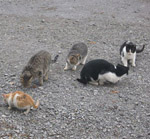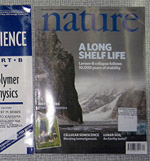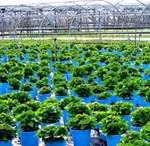When fishermen co-manage marine protected areas: the case of Italy
 Fish,
Fish,  Marine,
Marine,  Protected Areas
Protected Areas  Striped red mullet (Mullus surmuletus). The most economically important fish in the area because of its high market value - also the most caught. Image credit, Hans Hillewaert.A unique case study from Italy demonstrates how fishermen, scientists, and agency staff can co-manage marine protected areas to achieve both conservation and sustainable fishing.
Striped red mullet (Mullus surmuletus). The most economically important fish in the area because of its high market value - also the most caught. Image credit, Hans Hillewaert.A unique case study from Italy demonstrates how fishermen, scientists, and agency staff can co-manage marine protected areas to achieve both conservation and sustainable fishing.
In 2005, a portion of the 2227-hectare Torre Guaceto Marine Protected Area (MPA) off the Adriatic coast was opened up to fishing under an experimental co-management scheme. For the prior five years the entire MPA had been managed as a strict no-take reserve. In the absence of fishing, the area had seen an increase in fish density and a regrowth in macroalgal beds from barrens overgrazed by sea urchins.
Under the new scheme, participating fishermen could fish one day per week in an 1885-hectare section using equipment specifically selected to minimize impacts to fish that prey on sea urchins. The experiment followed an adaptive management approach in which all parties could agree to modify fishing levels and practices based on monitoring data. The fishers, MPA managers, and the scientists met bi-monthly to discuss the progress with the experiment.
The researchers calculated project success based on the catch per unit of effort (CPUE) measured in quantity of fish caught per meter of net used. While CPUE decreased substantially from an average of 60 kg/km to 20 kg/km, it stabilized at that level - a rate twice as high as the average CPUE outside the reserve (9.6 kg/km and declining). The authors write,
"Temporal trends in catch inside and outside the MPA provided two completely different pictures. After 3 years of co-managed exploitation, CPUE of all species and CPUE of the most common and valuable species within the MPA approached values approximately twice those obtained outside. In other situations in which an MPA was opened after full protection, in the absence of co-management, CPUE and fish densities decreased without stabilizing"
The researchers attribute the success in Torre Guaceto to the co-management approach, which incorporated the participating fishers' input into the decision making process. They state,
"According to our results, opening a sector of an MPA to benefit fisheries requires that the following be in place: effective enforcement; determination that fish density and size are increased before fishing can be resumed; and an adaptive co-management plan. Our results suggest that partial protection of coastal areas together with an adaptive co-management plan that involves fishers, scientists, and managers may benefit fishing communities and reduce overfishing"
--Reviewed by Rob Goldstein
GUIDETTI, P., & CLAUDET, J. (2009). Comanagement Practices Enhance Fisheries in Marine Protected Areas Conservation Biology DOI: 10.1111/j.1523-1739.2009.01358.x




Reader Comments